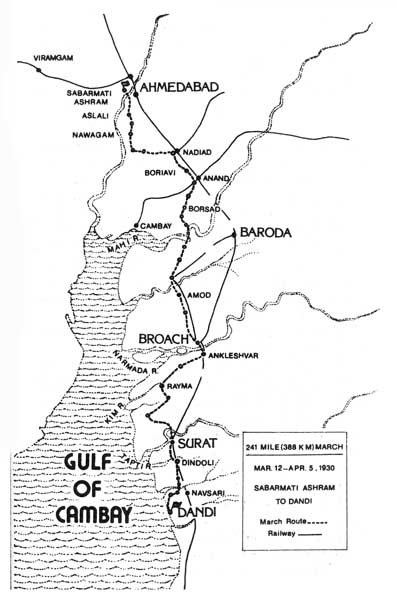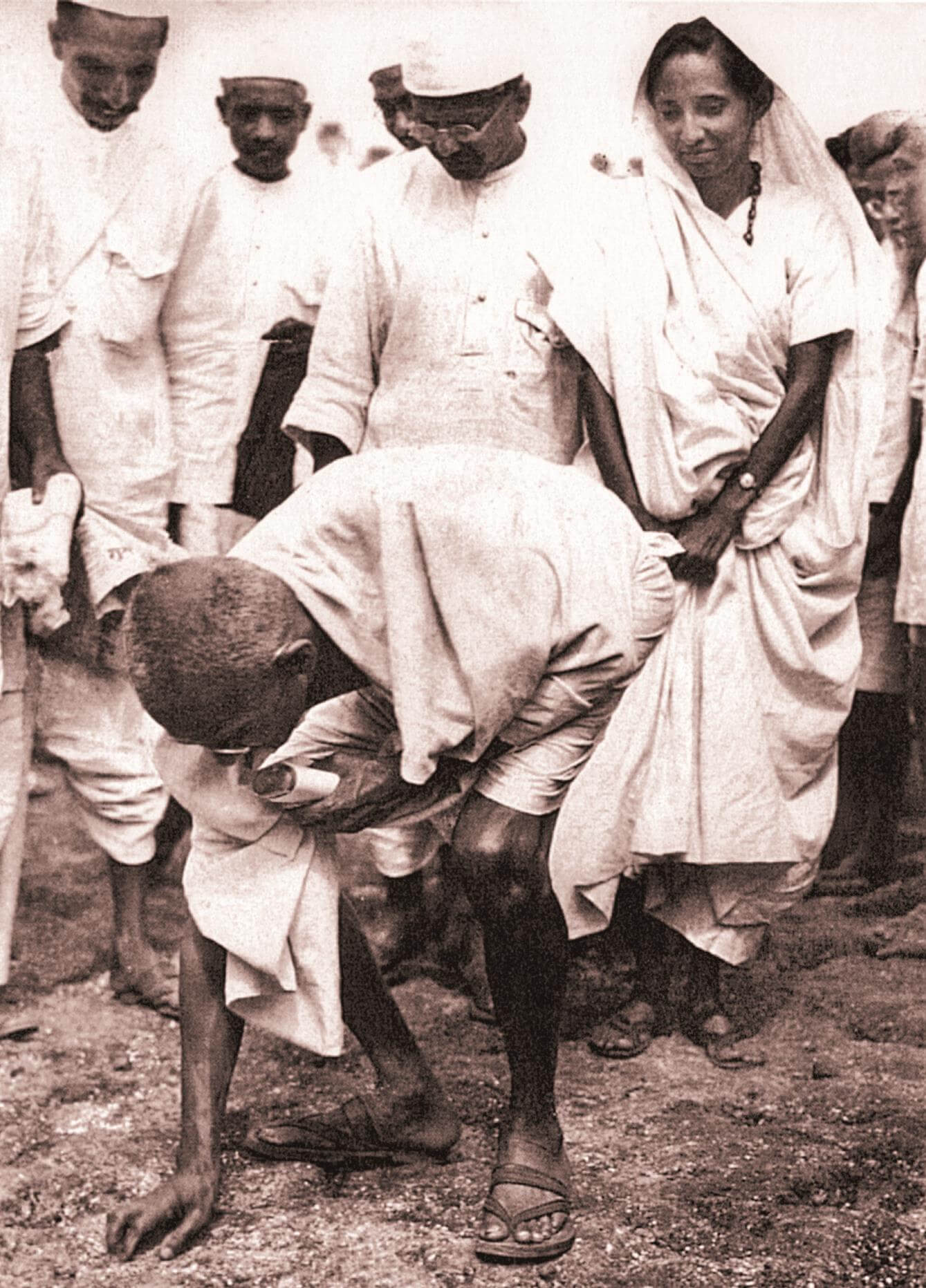It was also Mahatma Gandhi's second-largest public demonstration campaign for India's fight for freedom from the colonial powers.
Background
The Salt Act of 1882 was implemented in India in response to the recommendations of the Salt Commission of 1836. It gave the British government a monopoly on salt manufacturing in India.
Salt accounted for two-fifths of the British government's tax income. This tax imposed a significant hardship on the impoverished, as salt was a crucial component of the people's diet.
However, the British forbade them from producing salt for home consumption. As a result, people were obliged to acquire salt from shops at exorbitant costs, causing the price of salt to treble.
This regulation, enacted to encourage the British export trade, had a considerable impact on Indians. As a result of this rule, villages in Gujarat linked with salt manufacturing have suffered considerably.
Thus the Salt Act became one of the most hated laws in British India.
As part of his civil disobedience campaign, Mahatma Gandhi chose to exploit this predicament as a weapon against the British.
Mahatma Gandhi's civil disobedience movement was significantly influenced by Henry David Thoreau's 1849 essay Civil Disobedience (Formerly Resistance to Civil Government / On the Duty of Civil Disobedience).
The decision to engage in civil disobedience was made at the 1929 Lahore Congress session.
Following Purna Swaraj's proclamation on January 26, 1930, it was the first declared agitation sponsored by the Indian National Congress.
The British were oblivious to the gravity of Gandhiji's challenge. Despite the fact that Gandhiji had given the Viceroy, Lord Irwin, advance notice of his Dandi march, he ignored it.
Before embarking on the Dandi March, Gandhi addressed a historic letter to Lord Irwin in which he said that he would breach the salt law on March 2, 1930, which was disregarded as "Storm in a teacup."
His final words before he set out for the Dandi March was "Either I shall return with what I want or my dead body will float in the ocean."
Basic Facts
- Date – 1930 March 12.
- Part of – Civil Disobedience movement.
- Organized by – Mahatma Gandhi.
- Started from – Sabarmati Ashram (Ahmedabad)
- Total Distance covered (on foot) – 386 kms / 240 miles.
- Total no. of days – 24 days.
- No. of Volunteers – 78.
- The person who persuaded Gandhi to include women in the Dandi march – Kamaladevi Chattopadhyay.
- Total no. of women who participated in Dandi March – 2.
- Sarojini Naidu & Durga Bai Deshmukh.
- Malayalis who participated in Dandi March – C. Krishnan Nair, Tapan Nair, Titus, Raghava Pothuval, Sankarji.
- Song sung during Salt Satyagraha March – Raghupati Raghava Rajaram.
- Originally written by – Lakshmanacharya (Gandhiji used the modified version).
- Modified version composed by – Vishnu Digambar Paluskar.
- Reached Dandi on – 1930 April 5.
- Broke Salt Law on – 1930 April 6.
- British Viceroy during Salt Satyagraha – Lord Irwin.
- Gandhi was arrested on – 1930 May 4.
- First person to be arrested due to salt satyagraha – Sardar Vallabhai Patel.
- First woman to be arrested due to salt satyagraha – Rugmini Lakshmipati.
- Leader of Salt Satyagraha after the arrest of Gandhi – Abbas Thiyabji.
- Leader of Salt Satyagraha after the arrest of Abbas Thiyabji – Sarojini Naidu.
- The oldest person who took part in the Dandi March was – Mahatma Gandhi.
- The youngest person who participated in the Dandi March was – Vithal Leeladhar Thacker (16 years old, Gujarat).
- The first national leader to speak out against the Salt Tax in the Indian Legislature – Gopalakrishna Gokhale.
The Dandi March
Leaders of Salt Satyagraha in different Parts of India
People followed Gandhiji's example throughout the nation and broke the salt law.
In Malabar, K. Kelappan led the Salt Satyagraha from Kozhikode to Payyannur to break the Salt Law.
Meanwhile, in Tamil Nadu, it was C. Rajagopalachari who led the march from Thiruchirappalli to Vedaranyam on the Tanjore coast and was arrested on April 30.
- Leader of India's Northwest Frontier Province – Khan Abdul Ghafar Khan (Frontier Gandhi).
- Leader of civil disobedience movement in the eastern states of India – Rani Guidinliu.
- Odisha – Harekrushna Mahatab (Inchudi).
- Dictator of Civil Disobedience movement – Gopabandhu Choudhury.
- Ankola Satyagraha (Karnataka) – M. P. Nadkarni.
- Mypadu Satyagraha (Andhra Pradesh) – B. Gopal Reddy.
- Merina Beach Satyagraha (Tamil Nadu) – T. Prakasham.
- Chowpatty Beach (Mumbai) – Kamaladevi Chattopadhyay.
Dharsana Satyagraha
Dharsana was a city adjacent to Dandi in the Surat district. Immediately following the Dandi March, Gandhiji was arrested when he tried to peacefully blockade a salt warehouse, Dharsana Salt Works.
But the march went on as planned under the leadership of Abbas Tyabji and Kasturba Gandhi. However, when they were arrested, Sarojini Naidu and Maulana Abul Kalam Azad undertook the leadership.
🔎 The poem wrote by Changampuzha Krishna Pillai on Dharasana Satyagraha – Veera Vairagyam or Dharmabhatan of Darsana (വീര വൈരാഗ്യം അഥവാ ദർസനയിലെ ധർമ്മഭടൻ)
Hundreds of people were arrested in this peaceful agitation. The British police clubbed on the unprotected skulls and shoulders of the satyagrahis -- regardless of gender -- with steel-tipped lathis but none of them fought back.
Many of the satyagrahis were severely injured and were rushed to hospital but several of them lost their lives in the battle of freedom for our country.
🔎 The American Journalist who photographed the police atrocities in Dharasana, published it in England and in 1,350 newspapers across the world – Web Miller.
Thanks to Web Miller's journalistic efforts, the world began to notice the horrendous British atrocities in India notably during the Salt Satyagraha, and likened it to the Boston Tea Party of 1773, in which Americans opposed the British tax on tea.
And the Time Magazine named Mahatma Gandhi as the Man of the Year for 1930.
Aftermath of Salt Satyagraha
Millions of individuals around the country violated the Salt Law and faced prison time. Salt stores were plundered all over the place, and clandestine salt production began.
The participation of working-class, women, and teenagers was a significant feature of the Salt March and the Civil Disobedience movement in general.
The British tried to suppress it with an iron fist, used lathis and batons in instances such as the Dharasana, where 289 volunteers were injured in a single raid.
Gandhiji was held in Karadi at midnight on May 4–5, 1930, on a written order under Regulation XXV of 1827 From there he was then taken to Yerawada Central Jail.
Other significant figures such as Vallabhi Patel (imprisoned on March 7) and Jawaharlal Nehru (arrested and convicted to 6 months in jail on April 14) were arrested and punished for their roles in the 1930 Salt Satyagraha.
The British government imprisoned more than 60,000 people for participating in the protests as part of the Salt Satyagraha.
Gandhi- Irwin Pact of 1931 / Delhi Pact.
When the situation began to deteriorate dramatically, with the forthcoming Second Round Table Conference and the entire world's attention focused on the matter, the British found it impossible to keep the satyagrahis in the jail and Lord Irwin wanted the matter to be resolved.
So, on January 25, 1931, Gandhiji and all others were unconditionally released from prison, and Lord Irwin consented to peace talks.
The Congress leadership, led by Sardar Vallabhai Patel, chose Gandhiji as their representative.
According to the pact, Lord Irwin revoked the Salt Law and promised the release of all political prisoners except prisoners held guilty of violence.
He also agreed that to withdraw all the ordinances and prosecutions and revoke the ban on INC.
While Gandhi agreed to end the Civil disobedience movement and to participate in the Second Round Table Conference on behalf of INC.
The main negotiators between Gandhi and Lord Irwin for the Delhi pact were Tej Bahadur Sapru and C. Y. Chintamani.
Quotes on Salt Satyagraha
- 'Storm in a tea cup' – Lord Irvin.
- 'Sree Rama's march to Lanka' – Motilal Nehru,
- 'Exodus of Israelites under Moses' – Prafulla Chandra Ray.
- 'Napoleon's march from Paris to Elba' – Subhash Chandra Bose.
- 'Salt suddenly became a mysterious word, a word of power' – Nehru.
- 'Kindergarten stage of revolution' – H.N. Brailsford. (British Socialist)*
References:
- Kerala Gandhi – K. Kelappan.
- Vedaranyam Gandhi – C. Rajagopalachari.
- The iconic Naga leader whom Jawaharlal Nehru hailed as a queen – Rani Gaidinliu.
- Bardoli of Karnataka – Ankola.
- The person who was appointed as the salt dictator in Andhra state – K. Venkatappaiah.
- Sabarmati Ashram is situated on the banks of the river – Sabarmati.
- Author of Indian Women’s Battle for Freedom – Kamaladevi Chattopadhyay.
- On January 30, 2019, the National Salt Satyagraha Memorial, also known as the Dandi Memorial, was launched in which state? Gujarat (Dandi, 15 acres; estimated cost ₹89 crores).
Thanks for reading!!!









Post a Comment
Post a Comment